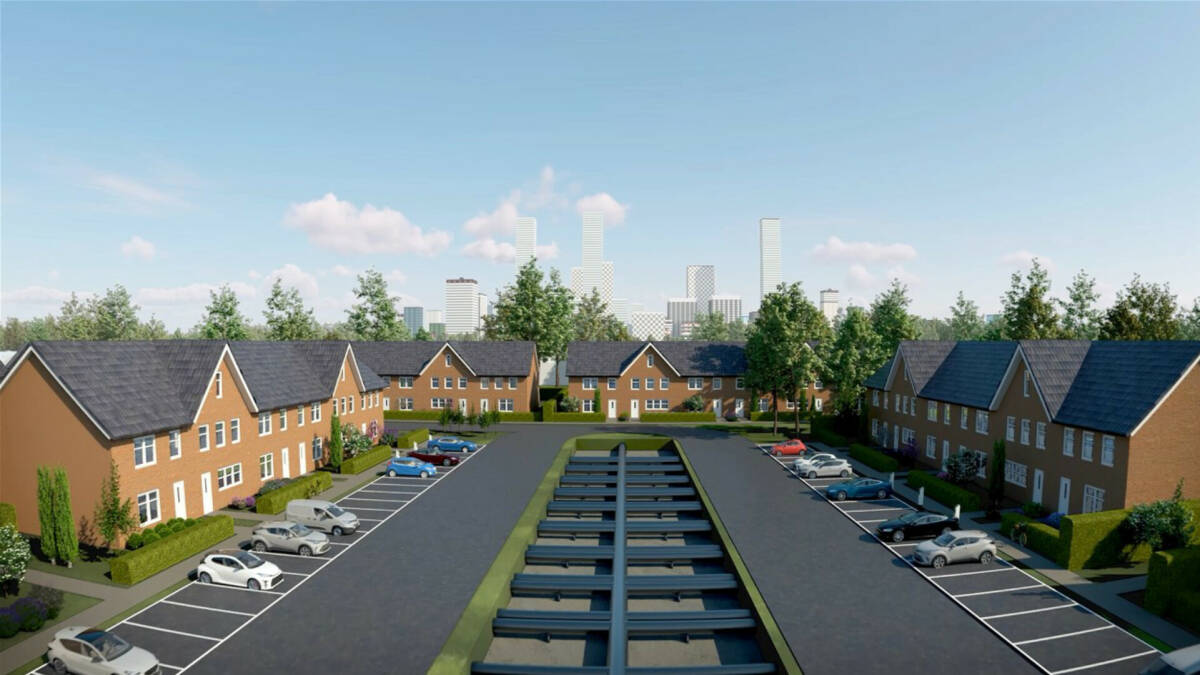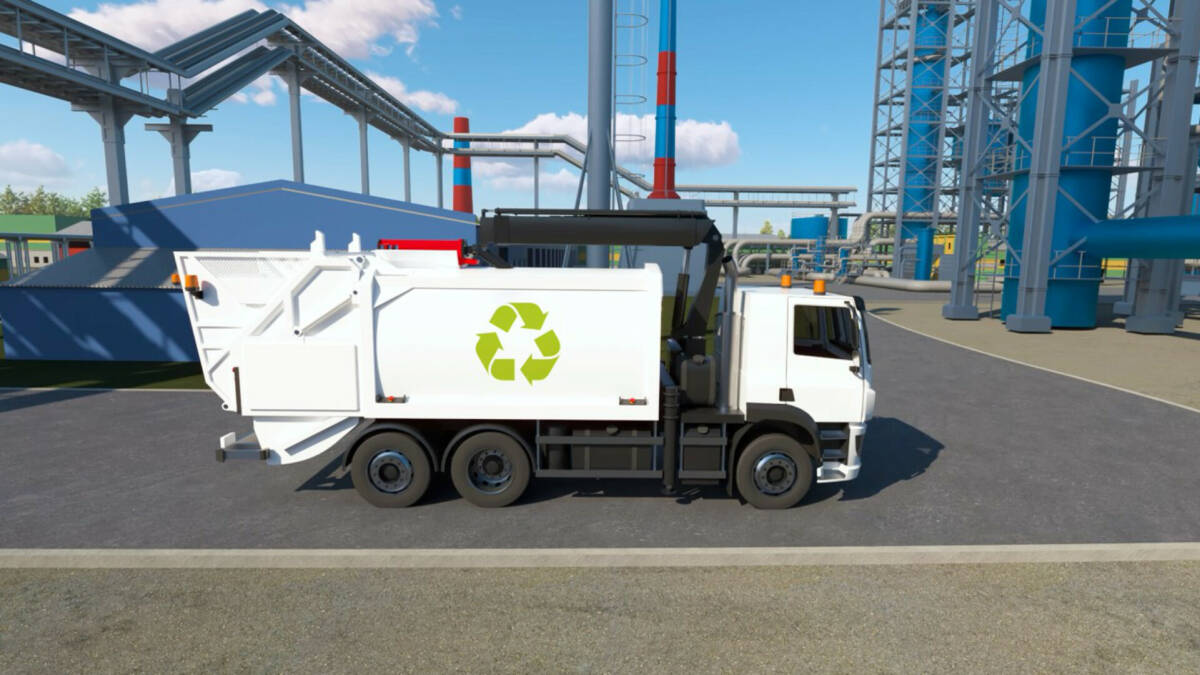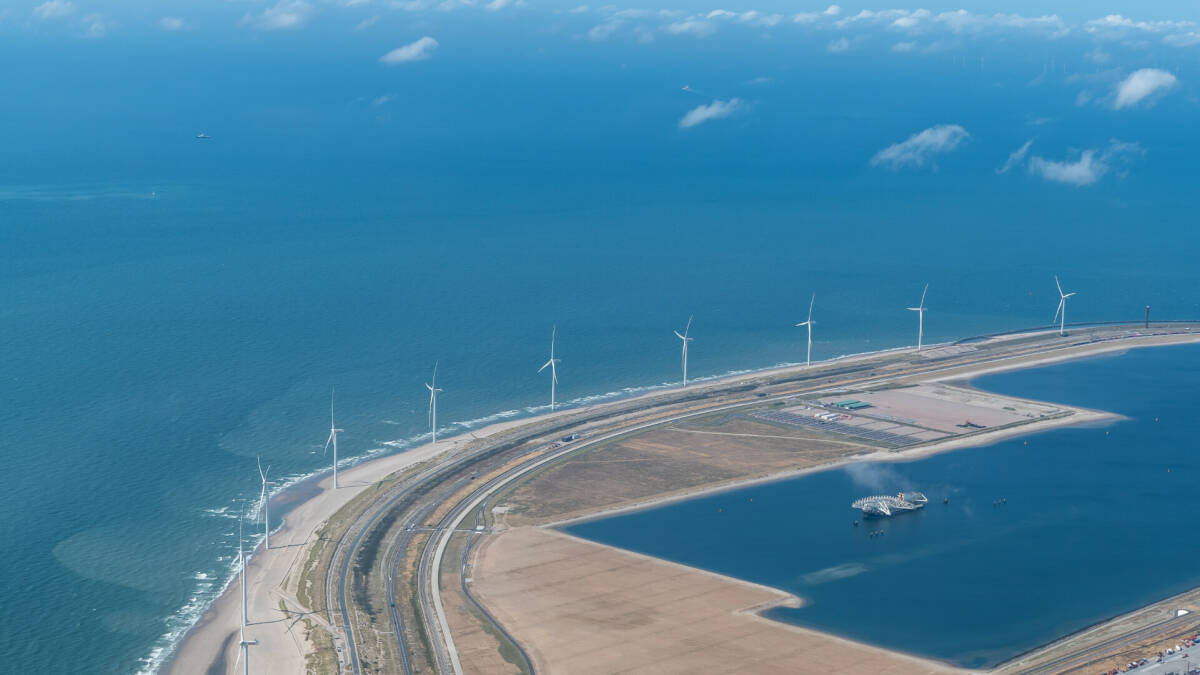Using residual heat

Anyone who checks our daily national energy consumption will see three large blocks: the biggest share concerns the built-up environment (houses and offices: 33%), then comes industry (28%), followed by traffic and transport (23%). Roughly half this end use concerns the generation of heat. If we make effective use of the residual heat released by industry, it will make a substantial contribution to achieving the climate goals.
Circularity

As the largest port in Europe and raw materials cluster in the Netherlands, we can contribute significantly to the raw materials transition. It requires an integrated approach and the collaboration of parties in the port and the port industrial complex through the entire production: raw material extraction and reprocessing, product design, production process, repairs, reuse and recycling. And it's not only waste that we return to production process, but also biomass, hydrogen and CO₂ as well.
Digitalisation

Innovative technologies and smart use of data helps us to accelerate the energy transition and facilitate circularity. We show you a number of examples where we deploy digitalisation to facilitate the sustainability transition.
Shore-based power

Shore-based power supplies electricity to vessels at the quay. This allows the vessels to turn off their auxiliary engines. That results not only in a significant reduction in CO₂, but also in vessels no longer emitting nitrogen and particulates while moored. By 2030 most cruise ships and vessels visiting Rotterdam will be 'plugged in' while they are docked.
Making transport more sustainable

There are already numerous examples of transport being made more sustainable. We highlight a few of them: the Rotterdam-Singapore Green & Digital Corridor, emission-free inland shipping, first hydrogen-powered inland vessel, RH2INE hydrogen production location project, Zero Emission Services (ZES), Clean Hydrogen and Road Transport Project (CH2aRT) and HyTrucks.
Hydrogen production, import, use and transport

Hydrogen is already used to make fossil fuels cleaner, and it will play a bigger role in the future as a fuel for heavy industry, such as steel production, and as a raw material in the chemicals industry. We'll see hydrogen appearing more frequently in mobility too. There are already hydrogen-powered cars and buses, and the first hydrogen-powered inland vessel already exists!
Renewable energy

In 2030, wind farms at sea will even provide 7,400 megawatts of power to the energy grid through Rotterdam. That's a third of the energy generated by the Dutch part of the North Sea and it arrives in the port of Rotterdam – a major landing point.
Capturing and storing CO₂

One example of a CCS project is Porthos. It involves laying an underground pipe that will transport CO₂ to empty gas fields under the North Sea from 2025. The Porthos project will account for a reduction of 2.5 million tonnes of CO2 a year, which is equivalent to 10% of the current Rotterdam CO2 emissions.
HI FROM THE FUTURE
Or deep dive directly into one of the eight steps that you are specifically interested in.
Our world is facing huge challenges that affect everything and everybody. Take, for instance, the energy transition, raw materials transition, climate change, digitalisation, socio-economic inequality and geopolitical developments. All these have a significant impact on our society and consequently on the port and the Port Industrial Complex. A huge joint effort is needed to forge a sustainable future. It's up to all of us to take responsibility and contribute to that. In this online publication, we’d like to show you what we are specifically working on, together with our partners (you!), to create the port of the future.
Read our online publication: 8 steps on board. How we navigate towards a sustainable future.
8 Steps on board: how we navigate towards a sustainable future
Circularity

As the largest port in Europe and raw materials cluster in the Netherlands, we can contribute significantly to the raw materials transition. It requires an integrated approach and the collaboration of parties in the port and the port industrial complex through the entire production: raw material extraction and reprocessing, product design, production process, repairs, reuse and recycling. And it's not only waste that we return to production process, but also biomass, hydrogen and CO₂ as well.
Hydrogen production, import, use and transport

Hydrogen is already used to make fossil fuels cleaner, and it will play a bigger role in the future as a fuel for heavy industry, such as steel production, and as a raw material in the chemicals industry. We'll see hydrogen appearing more frequently in mobility too. There are already hydrogen-powered cars and buses, and the first hydrogen-powered inland vessel already exists!
In 2030, wind farms at sea will even provide 7,400 megawatts of power to the energy grid through Rotterdam. That's a third of the energy generated by the Dutch part of the North Sea and it arrives in the port of Rotterdam – a major landing point.
Renewable energy

Using residual heat

Anyone who checks our daily national energy consumption will see three large blocks: the biggest share concerns the built-up environment (houses and offices: 33%), then comes industry (28%), followed by traffic and transport (23%). Roughly half this end use concerns the generation of heat. If we make effective use of the residual heat released by industry, it will make a substantial contribution to achieving the climate goals.
Digitalisation

Innovative technologies and smart use of data helps us to accelerate the energy transition and facilitate circularity. We show you a number of examples where we deploy digitalisation to facilitate the sustainability transition.
Shore-based power

Shore-based power supplies electricity to vessels at the quay. This allows the vessels to turn off their auxiliary engines. That results not only in a significant reduction in CO₂, but also in vessels no longer emitting nitrogen and particulates while moored. By 2030 most cruise ships and vessels visiting Rotterdam will be 'plugged in' while they are docked.
Making transport more sustainable

There are already numerous examples of transport being made more sustainable. We highlight a few of them: the Rotterdam-Singapore Green & Digital Corridor, emission-free inland shipping, first hydrogen-powered inland vessel, RH2INE hydrogen production location project, Zero Emission Services (ZES), Clean Hydrogen and Road Transport Project (CH2aRT) and HyTrucks.

Capturing and storing CO₂
One example of a CCS project is Porthos. It involves laying an underground pipe that will transport CO₂ to empty gas fields under the North Sea from 2025. The Porthos project will account for a reduction of 2.5 million tonnes of CO2 a year, which is equivalent to 10% of the current Rotterdam CO2 emissions.
Or deep dive directly into one of the eight steps that you are specifically interested in.
Our world is facing huge challenges that affect everything and everybody. Take, for instance, the energy transition, raw materials transition, climate change, digitalisation, socio-economic inequality and geopolitical developments. All these have a significant impact on our society and consequently on the port and the Port Industrial Complex. A huge joint effort is needed to forge a sustainable future. It's up to all of us to take responsibility and contribute to that. In this online publication, we’d like to show you what we are specifically working on, together with our partners (you!), to create the port of the future.
Read our online publication: 8 steps on board. How we navigate towards a sustainable future.
HI FROM THE FUTURE